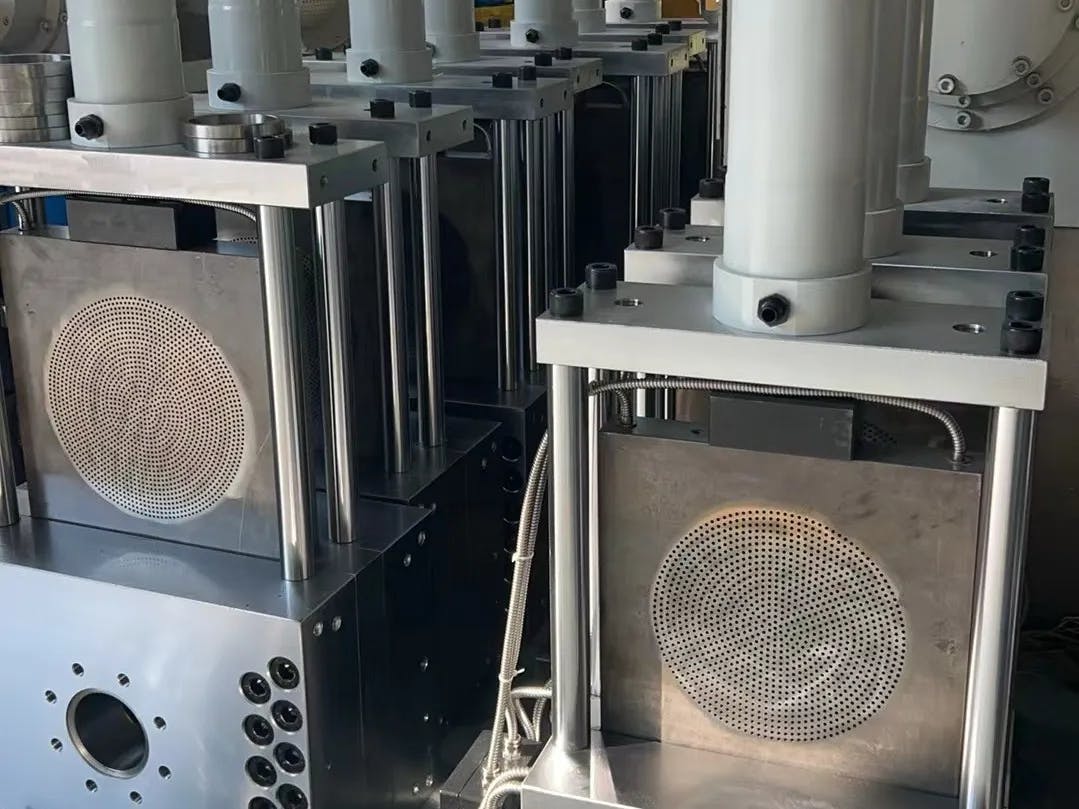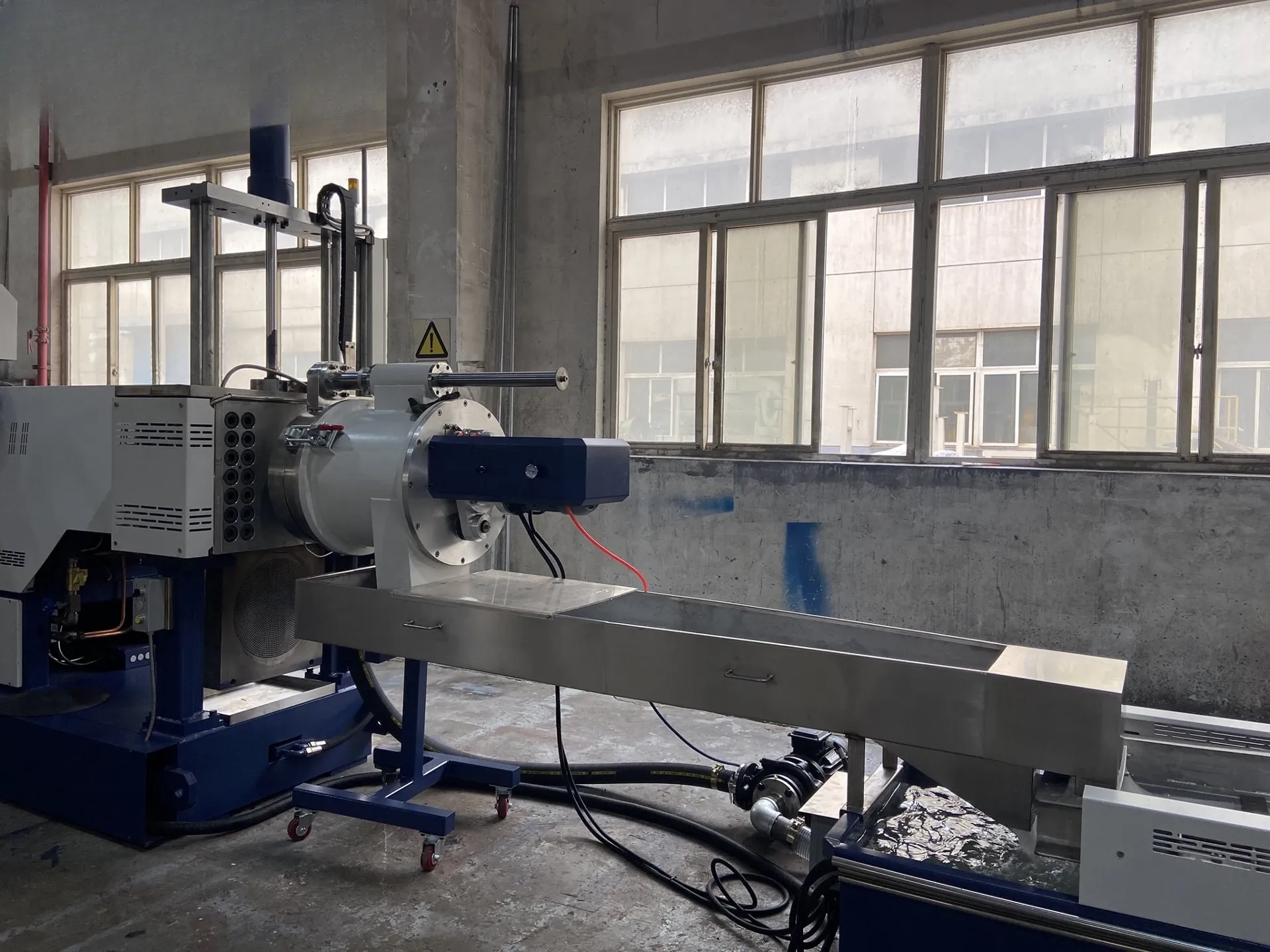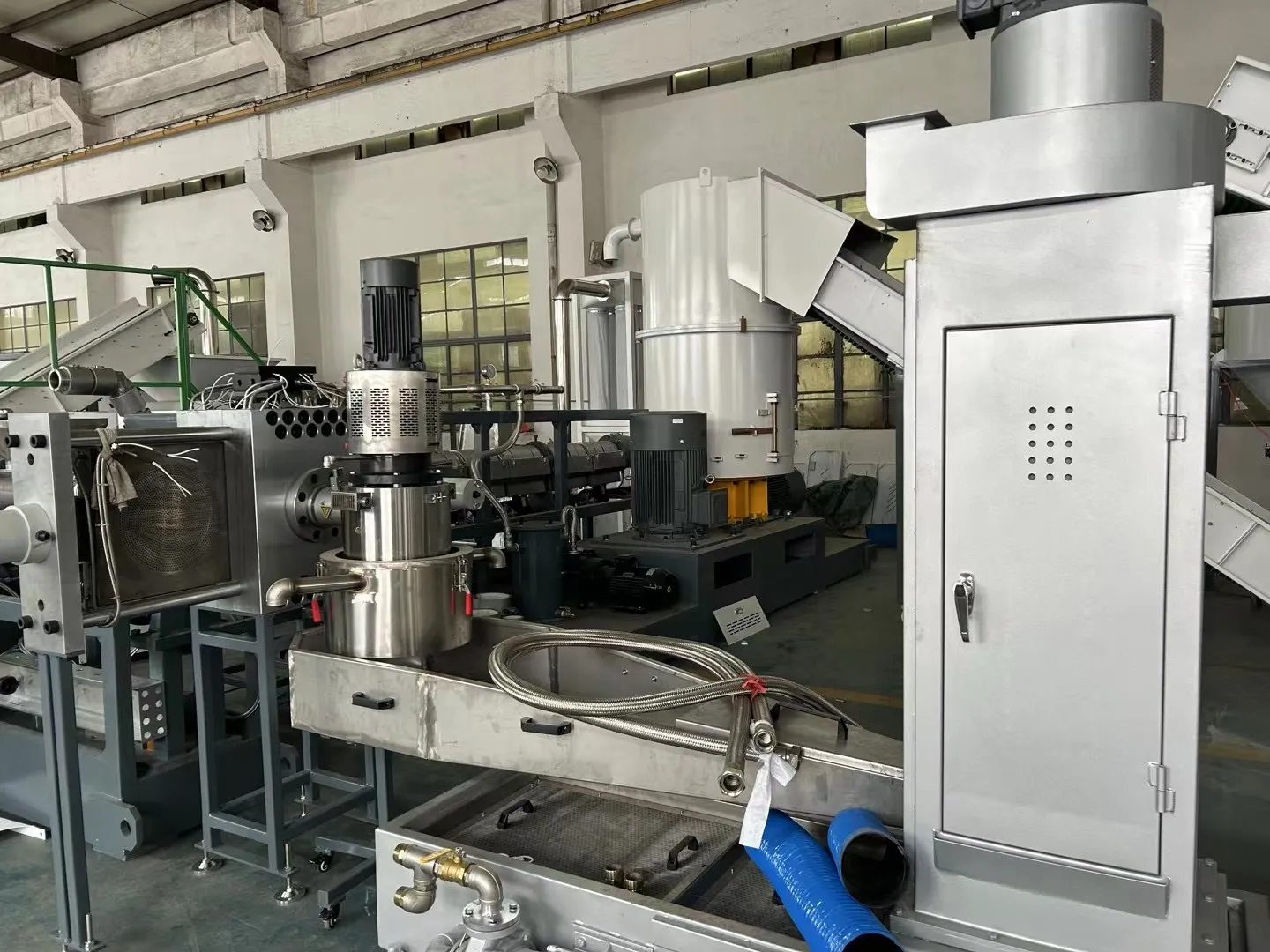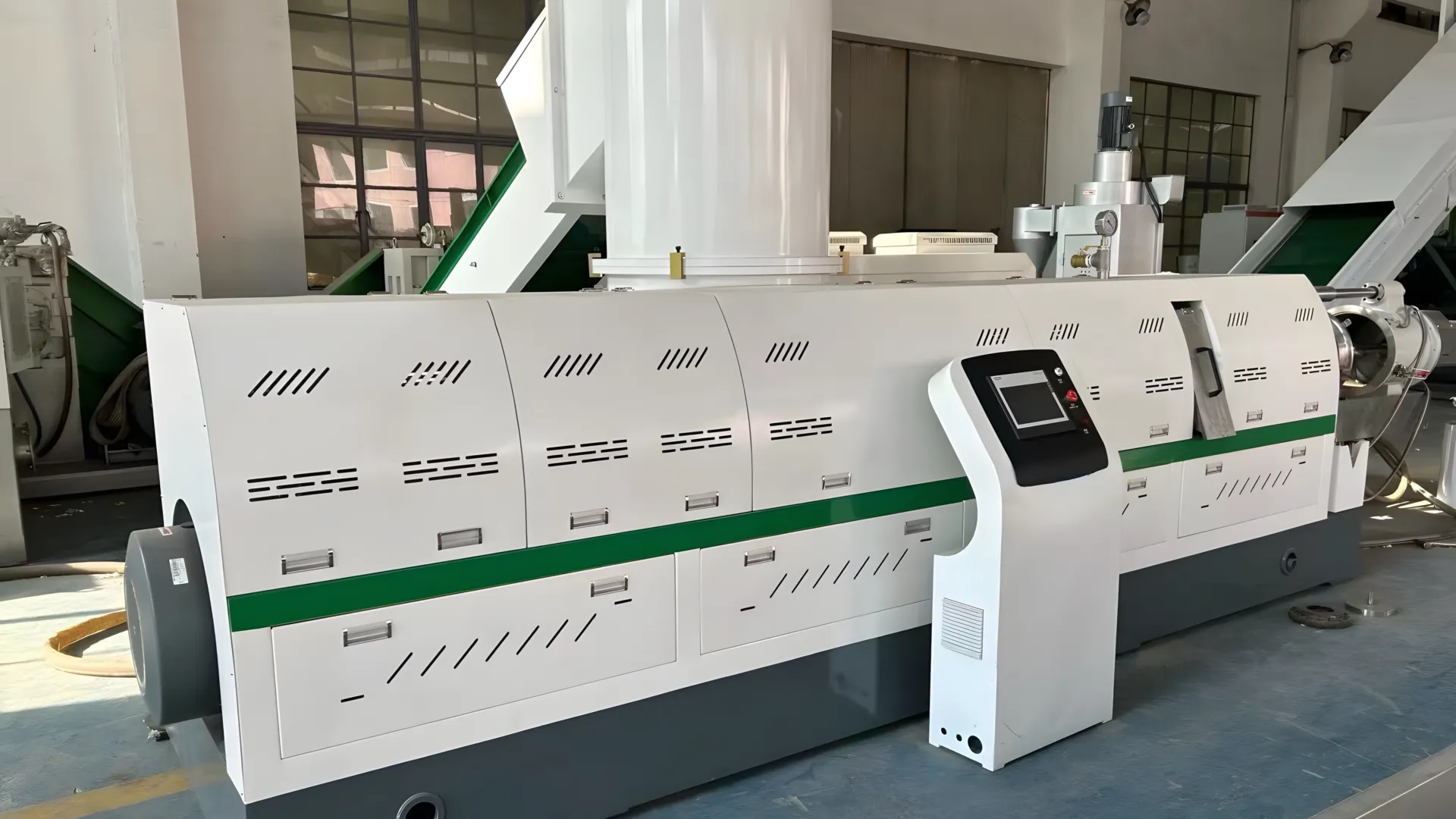Advanced EPS Foam
Pelletizing Machine
Transform bulky Expanded Polystyrene (EPS) waste into high-density, reusable pellets. Reduce disposal costs, save storage space, and contribute to a circular economy.
Request a QuoteWhy Our EPS Pelletizer?
High Volume Reduction
Significantly reduces EPS foam volume (up to 90:1), minimizing storage and transportation costs effectively.
Cost Savings
Lower landfill fees, reduced labor for handling waste, and creates a valuable secondary raw material.
Eco-Friendly Recycling
Diverts problematic EPS waste from landfills, supporting sustainability goals and producing recyclable PS pellets.
Efficient Hot-Melt Technology
Utilizes advanced hot-melt extrusion for dense, uniform pellets, ensuring high-quality output for reuse.
Robust & Reliable
Engineered for durability with high-quality components, ensuring long operational life and consistent performance.
Revenue Generation
The produced PS pellets are a marketable commodity, creating an additional revenue stream from waste material.
EPS Pelletizing Process
Material Feeding
Loose or pre-crushed EPS foam waste is fed into the machine’s hopper, often via a conveyor system.
Crushing & Pre-Compacting
An integrated crusher breaks down larger EPS pieces. A screw then compacts and pushes the material forward.
Heating & Melting
The compacted EPS is conveyed through a heated barrel, where it melts into a viscous polystyrene liquid.
Extrusion & Pelletizing
Molten PS is extruded through a die head and cut into small, uniform pellets by a high-speed pelletizer (e.g., water-ring or strand).
Cooling & Collection
Pellets are rapidly cooled (typically with water or air) and then dried, ready for bagging and storage.
See Our EPS Pelletizer in Action
Watch how our EPS foam pelletizing machine efficiently transforms voluminous waste into valuable, dense pellets.
Core Components of the Machine
Crushing Unit
Robust blades break down bulky EPS foam into smaller, manageable pieces for efficient feeding into the melting screw.
Hot-Melt Screw Extruder
Specially designed screw and heated barrel melts, homogenizes, and pressurizes the EPS material for extrusion.
Pelletizing Head & Cutter
Forms molten PS into strands or directly cuts it at the die face (e.g., water-ring pelletizer) into uniform pellets.
Cooling & Drying System
Rapidly cools the hot pellets using water or air, followed by a dewatering or drying stage to remove moisture.
Degassing System (Optional)
Vents to remove trapped air and moisture from the molten PS, improving pellet quality and density.
Control Panel (PLC)
User-friendly interface for controlling temperature, speed, and other operational parameters for optimal performance.
Technical Specifications
| Model | Capacity (kg/h) | Applicable Material | Screw Dia. (mm) | Main Motor (kW) | Heating Power (kW) | Pellet Size (mm) |
|---|---|---|---|---|---|---|
| EPS-P100 | 80-120 | EPS, XPS, EPP Foam | 100 | 18.5 – 22 | 15 – 20 | 2-4 |
| EPS-P200 | 180-250 | EPS, XPS, EPP Foam | 120 | 30 – 37 | 25 – 30 | 2-4 |
| EPS-P300 | 280-350 | EPS, XPS, EPP Foam | 150 | 45 – 55 | 35 – 40 | 2-4 |
Note: Specifications are indicative and can be customized based on specific customer requirements.
EPS Recycling & Pellet Gallery




Get Your Custom EPS Recycling Solution
Discuss your EPS waste challenges with our experts. We’ll design a tailored pelletizing solution and provide a competitive quote.

